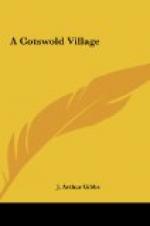The falcons are “hawks of the tower and lure.” They tower aloft and swoop down on partridge, rabbit, or heron, finally returning to the lure; and be it noted that the lure is a sham bird, with a “train” of food to entice the falcons back to their master.
The short-winged hawks, on the other hand, are birds of the fist or the bush. Instead of “towering” and “stooping,” they lurch after their prey in wandering flight, finally returning to their master’s fist.
In Macbeth we find allusion to the “falcon towering in her pride of place”; and indeed there is no prettier sport on a still day than a flight at the partridge or the heron with the noble peregrine falcon or her mate the tiercel-gentle.
At the honest squire’s word of command, a male peregrine is forthwith despatched, and, soaring upwards into the air, he is almost lost to sight in the clouds, though the faint tinkling of the bells attached to his feet may yet be heard; then, stooping from the skies, the tiercel-gentle descends from the heavens and strikes his long-beaked adversary. Down, down they come, fighting and struggling in the air, until, exhausted by the unequal combat, the heron gradually falls to the ground, and receives from the falconer his final coup de grace. Sometimes a pair of hawks are thrown off against a heron.
Now comes a flight at the partridge. First of all the spaniel is despatched to search the fields for a covey of birds. The desired quarry being found, he “points” to them, and this time the female peregrine or true falcon is sent on her way. Away she soars upwards, “waiting on and towering in her pride of place.” Then the birds, lying like stones beneath her savage ken, are flushed by the dog, and the cruel peregrine, after selecting her bird, with her characteristic “swoop” brings it to the ground. If she is unsuccessful in her first attempt, she will tower again, and renew the attack. The riders have to gallop as fast as their nags can go, if they would keep in with the sport, for as often as not a mile or more of ground has to be covered in a long flight, ere the falcon “souses” [36] her prey. After the flight, a well-trained falcon will invariably return to the lure with its “train” of food.
[Footnote 36: King John. V. ii.]
As Mr. Madden has proved, the whole of Shakespeare’s works teem with allusions to the art of falconry.
“HENRY:
But what a point, my lord, your falcon made,
And what a pitch she
flew above the rest!
To see how God in all
His creatures works!
Yea, man and birds are
fain of climbing high.
SUFFOLK:
No marvel, an it like your majesty,
My lord protector’s
hawks do tower so well;
They know their master
loves to be aloft
And bears his thoughts
above his falcon’s pitch.
GLOUCESTER:
My lord, ’tis but a base ignoble mind
That mounts no higher
than a bird can soar.” [37]




